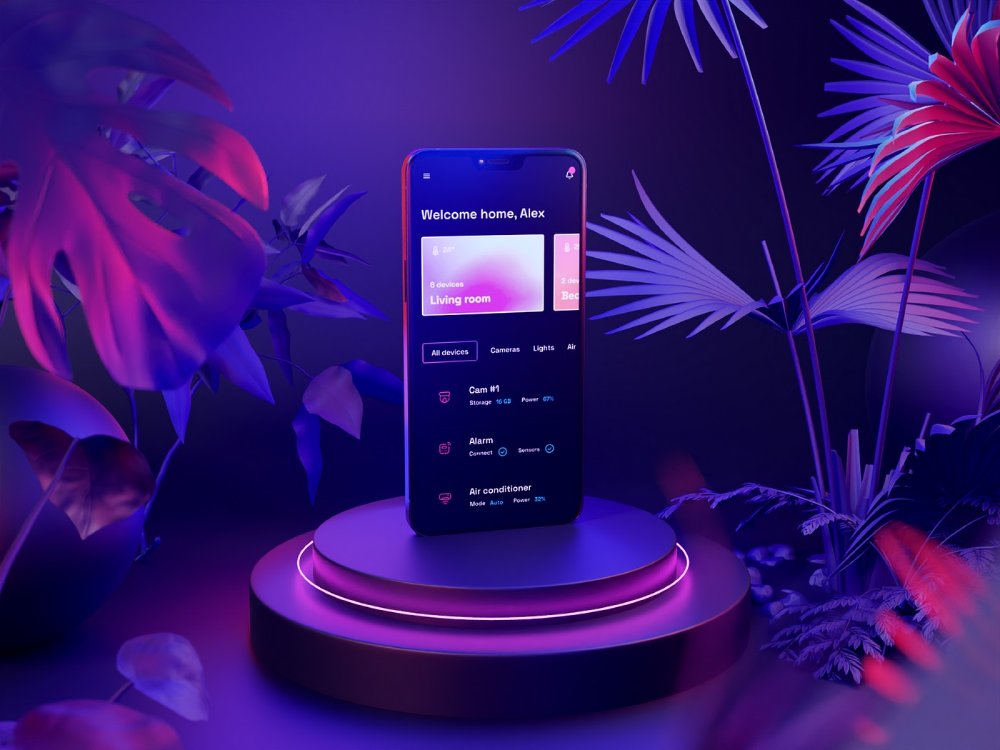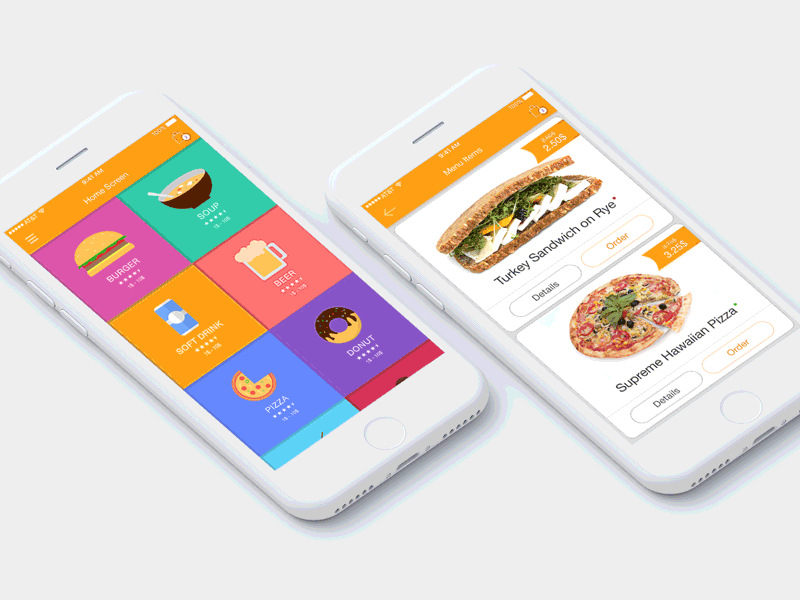Technology
A Step-By-Step Guide: How To Develop A Mobile App For Your Business


Apps for smartphones and tablets are already standard business practices since they simplify how consumers engage with companies and get access to their goods and services. Custom mobile app development, whether big or small, may help you connect with consumers, boost sales, and stay ahead of the competition. If you lack the in-house resources or expertise to create an app, consider outsourcing to professional mobile app development services.
In this post, you will learn all you need to know to create a successful mobile app for your company.
1: Define Your App Idea and Objectives
A business’s mobile app development process should begin with formulating a clear vision for the app and its intended function. Choosing who you want to reach with your app, what issues it will address, and its aim would be best. You may use this to develop an app concept that more precisely serves your company’s goals.
During this phase, some pertinent questions to ponder include:
- Please explain the app’s primary function.
- Which issues does this software help to resolve?
- Can you describe the people you’re hoping to reach?
- Which capabilities and features are necessary for the app?
- Can you specify the app’s business goals?
Having a clear vision of where you want to take your app and what you want to achieve can help you zero in on the most critical aspects of the app’s design. You may use it to plan how much money you’ll need and how long it will take to make the app.
2: Research Your Market and Competitors
Assuming you have settled on a particular app concept and set of goals, the following step is to investigate the market and your potential rivals. Learning about your target audience’s tendencies and preferences and the applications your competitors deliver would be best.
During this phase, you should ask yourself the following questions:
- In your field, what are the most downloaded apps?
- What do these applications do, and how do they do it?
- I’m curious about the pros and cons of these programs.
- How do you charge for these apps?
- Which features of your app make it better than the rest?
Doing market and competition research can help you see where there are voids and room for your app. As a bonus, you can use this method to brainstorm ways to give your app an edge over similar offerings.
3: Choose Your App Platform
Assuming you’ve decided to create a mobile app for your company, the next step is determining which platform you want to use. Whether you build a native, hybrid, or web app depends on your specific needs. Native applications provide a streamlined experience since they were built from the ground up for a particular operating system (iOS or Android). These apps are developed in platform-specific languages (Swift for iOS and Kotlin for Android) and have access to the device’s internal hardware and software. Businesses that care about the quality of their customers’ experiences should develop native applications to use the capabilities available on each platform.
Hybrid applications are web-based in their development (using languages like HTML, CSS, and JavaScript). Still, they are packaged in a native container so that they may make use of the device’s specific hardware and software. When a company wants to create an app for iOS and Android but only has to maintain one code set, it should consider making a hybrid app. Web applications (apps) are created using web technologies (such as HTML, CSS, and JavaScript) and are used in a web browser. They are perfect for companies who want to create a mobile app with a restricted budget or provide a mobile-optimized version of their website.
4: Create Your App Prototype
To design a mobile app for your company, you must first make a prototype of the app. A prototype is a basic version of your program that can be used to test how it works. Building a prototype will allow you to see whether people will use your app, confirm your assumptions, and learn from the experience. It will also aid in the discovery of any problems or difficulties that may arise when creating the app. Create your app prototype using several tools and platforms, such as Sketch, Figma, Adobe XD, or InVision. The UI and UX of your app can be created with the help of these sketch and wireframing tools.
The following are some guidelines to consider while designing your app prototype:
- Keep your app’s attention on its most essential features and functions.
- The user interface (UI) should learn quickly and be easy to use.
- Replace potentially distracting information (text and pictures) with placeholders.
- Getting input from actual users is crucial to developing a successful app.
5: Design Your App’s UI and UX
After making a working prototype of your app, the next stage is to design its user interface and user experience. The success of your app will depend on how well it is designed for its target audience. Creating a simple, intuitive interface that flows naturally would be best.
When making your app’s user design and user experience, you should keep in mind the following rules:
- Always use the same color scheme and font size across the app.
- The app’s design should be straightforward to use.
- Ensure your photos and visuals are good quality and suitable for mobile devices.
- Make sure that anyone can read and understand the app’s information.
- Reduce the animations and transitions you utilize to prevent overloading the user.
You may design your app’s user interface and experience using several tools and platforms, such as Sketch, Figma, Adobe XD, and InVision. With these resources, you may create functional prototypes of your app’s user interface and user experience.


6: Develop Your App
Building an app is the next stage after designing its user interface and user experience. The choice of whether or not to make the app in-house or hire an independent app development firm lies squarely in your lap. To create your app without outsourcing, you’ll need to find a team of developers fluent in the languages and frameworks you use. If you decide to hire a business to create your app, be sure it has expertise in the same or comparable types of applications.
The following are some recommended practices to keep in mind while you create your app:
- Agile development methods may make the development process much more efficient and flexible.
- If you want to find problems with your app, test it on actual devices.
- Using a cloud-based app development platform may enhance teamwork and revision tracking.
- If you care about the safety of your app and its users’ data, you should utilize secure coding techniques.
- Verify that your software satisfies the standards set out by each platform (such as Apple’s software Store Review Guidelines and Google’s Play Store Developer Program Policies).
7: Test and Launch Your App
The following phase, after the app development, is testing and release. Testing is integral to the app development process to find any remaining bugs or problems and guarantee that your app is ready for release.
Among the many things to bear in mind when testing your app are the following:
- Put your app through its paces on various hardware and software configurations (Android and iOS).
- If you want to save time and work more effectively, try using these automated testing solutions.
- Put your app through its paces on 3G, 4G, and Wi-Fi connections.
- Get your app into the hands of actual people and see how they interact with it.
Launching your app is the next step once you’ve thoroughly tested it and corrected any problems. You will only see your software if you get it into app shops like the Software Store and the Google Play Store and start pushing it to your demographic.
There are a few things you should always do before releasing an app:
- Verify that your software follows the rules and guidelines the app store sets.
- Make an engaging description of your software that emphasizes its features and advantages.
- Showcase the features and capabilities of your software with high-quality screenshots and videos.
- You may improve your app’s visibility in app stores by using keywords in the app’s title and description.
- Promote your app to potential users by sharing it on social media and other marketing channels.
- Get user feedback by collecting ratings and reviews to boost your app’s profile.
8: Maintain and Update Your App
Simply releasing your app does not conclude the app development process. Regularly maintaining and upgrading your app will guarantee that it keeps pace with changing user preferences and technological standards.
When updating and maintaining an app, you should keep the following in mind:
- Always look for problems and ways to enhance your app by monitoring its use.
- Quickly addressing any flaws or bugs will guarantee a positive user experience.
- Maintain your app’s value by continually updating it with new features and functions.
- Ensure your software is compatible with the most recent devices and operating systems.
- Improve your app’s standing and popularity by addressing concerns raised by its users.
Conclusion
It takes time and effort to properly plan, design, and create a mobile app for your company. A successful mobile app that caters to the demands of your demographic and advances your company’s objectives may be made by following the steps above. Creating a mobile app is an ongoing process that needs regular attention and upgrades to be current and valuable to users. To keep up with the rapidly developing mobile app industry, you must keep up with the newest mobile technology and customer demands.
Author Bio:
John Parker is a content creator and marketing specialist. He has a passion for writing and loves helping businesses grow through effective marketing strategies and creative content.





 Technology4 weeks ago
Technology4 weeks ago10 Best Generative AI Tools to Scale Your Business in 2024



 Games2 weeks ago
Games2 weeks agoA Brief History of Solitaire: From Cards to Computers



 Model3 weeks ago
Model3 weeks agoKatelyn Ernst: Bio, Age, Lifestyle, Career, Hair & Eye Color, Net Worth



 Technology2 weeks ago
Technology2 weeks agoHow To Enhance Your Learning With Duolingo Podcasts?



 Technology5 days ago
Technology5 days agoThe Website Design Workshop: Crafting User-Centric Sites

You must be logged in to post a comment Login